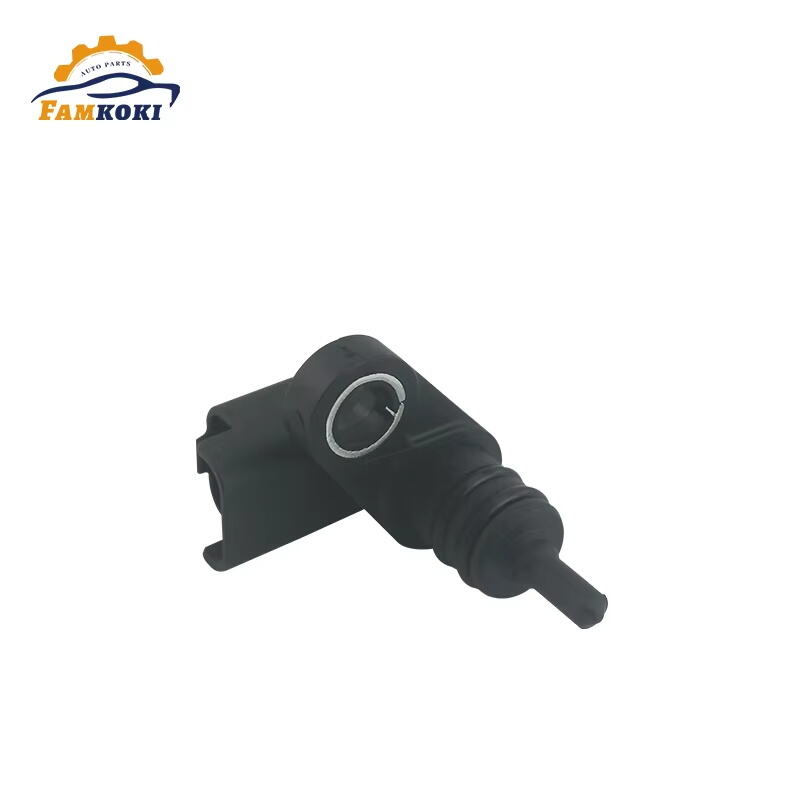Visão geral dos Sensores de Oxigênio e Sua Evolução
Sensores de oxigênio são componentes pivôis em veículos modernos, desempenhando um papel crucial no monitoramento dos gases de escape para melhorar o desempenho do motor e reduzir as emissões. Esses dispositivos analisam o teor de oxigênio nas emissões de escape, fornecendo feedback ao sistema de gerenciamento do motor para ajustar a mistura ar-combustível de forma eficiente. Como resultado, essa otimização leva a uma melhoria na eficiência de consumo de combustível e à redução de emissões nocivas, que são essenciais para atender às rigorosas regulamentações ambientais.
Ao longo dos anos, os sensores de oxigênio evoluíram significativamente, transitando de componentes básicos e analógicos para sistemas avançados que integram tecnologia digital e análise de dados em tempo real. Inicialmente, esses sensores operavam com princípios simples, oferecendo precisão e tempo de resposta limitados. Hoje, no entanto, os sensores de oxigênio modernos apresentam recursos sofisticados e são fundamentais para as capacidades diagnósticas avançadas encontradas nos veículos contemporâneos. Esses avanços não apenas melhoram a eficiência e o desempenho dos motores de combustão interna, mas também abrem caminho para inovações em tecnologias de combustíveis alternativos e sistemas híbridos.
Tecnologia Antiga de Sensores de Oxigênio
Sensores baseados em zircônia e titânia foram alguns dos primeiros tipos de sensores de oxigênio usados em aplicações automotivas. Os sensores de zircônia operam com um princípio simples: um elemento de zircônia cerâmica gera um sinal de voltagem em resposta à diferença de concentração de oxigênio em suas superfícies, garantindo a mistura de combustível ótima. Por outro lado, os sensores de titânia funcionam por meio de mudanças na resistência com base nos níveis de oxigênio. Essas tecnologias desempenharam historicamente um papel crucial no permitir que fabricantes atendessem às regulamentações de emissões, e sua introdução marcou um avanço significativo na tecnologia automotiva.
No entanto, os sensores de oxigênio mais antigos enfrentavam várias limitações que afetavam o desempenho e a eficiência do motor. Um grande problema era sua saída de sinal analógica, que frequentemente resultava em tempos de resposta mais lentos para detectar mudanças na mistura de escape. Essa limitação impactava a capacidade do motor de se ajustar rapidamente às condições de direção variáveis, potencialmente levando a uma eficiência de combustível inferior e a emissões mais altas. Além disso, como dispositivos analógicos, esses sensores eram mais suscetíveis a imprecisões e exigiam calibração frequente para manter a consistência no desempenho.
Inovações Modernas em Sensores de Oxigênio
Os sensores de oxigênio modernos presenciaram inovações notáveis, principalmente no campo dos sensores digitais que se destacam por tempos de resposta mais rápidos. Esses sensores são capazes de detectar mudanças nos níveis de oxigênio em velocidades muito mais aceleradas em comparação com seus antecessores. Por exemplo, os sensores tradicionais geralmente tinham tempos de resposta medidos em segundos, enquanto os sensores digitais modernos podem alcançar a detecção em milissegundos. Este avanço na velocidade de resposta é crucial para otimizar o desempenho do motor e a eficiência no consumo de combustível, contribuindo para um controle de emissões mais preciso e uma melhor conformidade ambiental.
O uso de materiais avançados revolucionou ainda mais a indústria de sensores de oxigênio. Novos compostos cerâmicos e óxidos metálicos foram desenvolvidos para suportar condições extremas, melhorando tanto a precisão quanto a durabilidade dos sensores de oxigênio modernos. Esses materiais permitem que os sensores operem eficientemente em uma faixa mais ampla de temperaturas e pressões do que os modelos tradicionais baseados em zircônia ou titânia. Este avanço não só estende a vida útil do sensor, mas também mantém sua precisão, garantindo medições contínuas e confiáveis críticas para a gestão ideal do motor.
A integração com sistemas inteligentes representa outra inovação significativa na tecnologia moderna de sensores de oxigênio. Os sensores modernos agora podem se comunicar com sistemas de diagnóstico a bordo, fornecendo dados em tempo real que são extremamente valiosos para a manutenção preditiva e estratégias de controle adaptativo do motor. Essa integração perfeita permite que veículos se monitorem e ajustem em tempo real, otimizando o desempenho enquanto minimizam o desgaste e falhas inesperadas. Ela possibilita uma abordagem proativa na manutenção de veículos, facilitando intervenções oportunas que evitam reparos caros e reduzem o tempo de inatividade. Tais avanços tecnológicos sublinham a evolução contínua e sofisticação dos sensores de oxigênio modernos em aplicações automotivas e industriais.
Melhorias de Eficiência nos Sensores de Oxigênio Modernos
Os sensores de oxigênio modernos alcançaram melhorias notáveis em sensibilidade e precisão, impactando diretamente a redução de emissões. Esses sensores utilizam tecnologias avançadas que permitem uma detecção mais rápida e precisa dos níveis de oxigênio, resultando em um desempenho ambiental aprimorado dos veículos. Por exemplo, em aplicações automotivas, os sensores mais recentes podem alcançar uma margem de erro muito baixa, o que leva a uma redução de emissões de até 30% em comparação com modelos mais antigos. Isso é significativo pois contribui diretamente para menos poluição e está alinhado com regulamentações ambientais globais rigorosas.
Além disso, os sensores de oxigênio modernos desempenham um papel crucial no aumento da economia de combustível, beneficiando tanto os consumidores quanto o meio ambiente. Estudos recentes na indústria automotiva destacam como esses sensores otimizam o desempenho do motor ajustando a mistura ar-combustível com mais precisão, melhorando assim a eficiência do combustível. De acordo com relatórios da indústria, veículos equipados com tecnologia avançada de sensor de oxigênio podem experimentar economia de combustível de até 15%. Isso reduz a pegada ambiental dos veículos a gasolina e diesel, proporcionando um passo concreto em direção à tecnologia automotiva sustentável. A eficiência de combustível aprimorada não só reduz a pegada de carbono, mas também ajuda os motoristas a economizar nos custos de combustível, exemplificando os benefícios duplos desses sensores inovadores.
Análise Comparativa de Tecnologias de Sensores de Oxigênio Modernas e Antigas
Os sensores de oxigênio modernos são significativamente avançados em comparação com seus antecessores mais antigos. A evolução dos materiais básicos nos sensores antigos para compostos inovadores nos designs contemporâneos marca uma mudança pivotal. Por exemplo, muitos sensores mais antigos utilizavam elementos de óxido de zircônio, que, embora eficazes, frequentemente enfrentavam problemas de durabilidade. Em contraste, os sensores modernos incorporam materiais avançados que resistem ao desgaste, oferecendo maior longevidade. O tipo de saída também evoluiu, transitando de saídas de voltagem básica para sinais complexos que fornecem diagnósticos em tempo real, aumentando enormemente a eficiência operacional.
Os benefícios dos sensores de oxigênio modernos em aplicações automotivas vão além de melhorias imediatas. Eles oferecem várias vantagens a longo prazo que impactam significativamente o desempenho do veículo e a gestão de custos. Sensores modernos contribuem para uma maior confiabilidade do veículo ao fornecer um desempenho consistente, reduzindo a probabilidade de falhas no motor. Essa confiabilidade se traduz em custos de manutenção reduzidos, pois são necessárias menos substituições e reparos. Além disso, os sensores modernos são essenciais para atender às rigorosas regulamentações de emissões, garantindo que os veículos estejam em conformidade com os padrões ambientais atuais. Esses avanços não apenas melhoram o desempenho, mas também apoiam inovações automotivas sustentáveis.
Perguntas Frequentes
Qual é a principal função de um sensor de oxigênio em um veículo?
O papel principal de um sensor de oxigênio é medir o teor de oxigênio nos gases de escape. Ele fornece dados em tempo real ao sistema de gerenciamento do motor do veículo, ajudando a ajustar a mistura ar-combustível para um desempenho ótimo e redução de emissões.
Como os sensores de oxigênio evoluíram ao longo do tempo?
Os sensores de oxigênio evoluíram de dispositivos simples e analógicos para sistemas digitais avançados. Sensores modernos oferecem tempos de resposta mais rápidos, maior precisão e estão integrados com sistemas inteligentes para diagnósticos em tempo real e otimização do desempenho.
Quais são as vantagens dos sensores de oxigênio modernos em relação aos modelos antigos?
Sensores de oxigênio modernos oferecem maior precisão, tempos de resposta mais rápidos e durabilidade aprimorada devido a materiais avançados. Eles também se integram com diagnósticos a bordo para uma melhor gestão do motor e contribuem para a redução de emissões e melhoria na economia de combustível.
Os sensores de oxigênio modernos podem melhorar a eficiência no consumo de combustível?
Sim, os sensores de oxigênio modernos ajudam a melhorar a eficiência do combustível ajustando precisamente a mistura ar-combustível no motor, levando a uma combustão ótima e reduzindo o consumo de combustível.
Quais materiais são usados nos sensores de oxigênio modernos?
Os sensores de oxigênio modernos utilizam materiais avançados como novos compostos cerâmicos e óxidos metálicos que resistem a condições extremas e fornecem medições precisas e confiáveis em várias faixas de pressão e temperatura.
Índice
- Visão geral dos Sensores de Oxigênio e Sua Evolução
- Tecnologia Antiga de Sensores de Oxigênio
- Inovações Modernas em Sensores de Oxigênio
- Melhorias de Eficiência nos Sensores de Oxigênio Modernos
- Análise Comparativa de Tecnologias de Sensores de Oxigênio Modernas e Antigas
-
Perguntas Frequentes
- Qual é a principal função de um sensor de oxigênio em um veículo?
- Como os sensores de oxigênio evoluíram ao longo do tempo?
- Quais são as vantagens dos sensores de oxigênio modernos em relação aos modelos antigos?
- Os sensores de oxigênio modernos podem melhorar a eficiência no consumo de combustível?
- Quais materiais são usados nos sensores de oxigênio modernos?
 EN
EN
 AR
AR
 FR
FR
 KO
KO
 PT
PT
 RU
RU
 ES
ES


